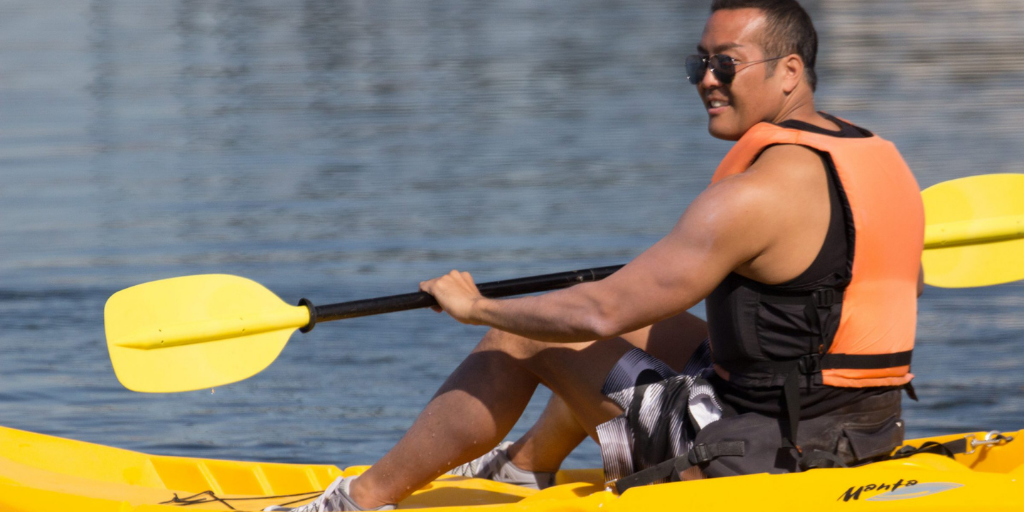This blog post is part of a series celebrating the great work of our Safe Boating Campaign partners. We sat down with Lisa Dugan, Boat and Water Safety Outreach coordinator with the Minnesota Department of Natural Resources.

Q: Lisa, thank you for your support of the Safe Boating Campaign! What outreach efforts does the Minnesota DNR have planned for this summer/fall?
A: This past year, we saw waterways across the nation pushed to capacity by boaters of a wide range of age, experience levels, and variety of vessel types. It stands to reason that people are looking for something to do and a safe place to do it, all at a time when the pandemic has raised safety concerns and limited recreational opportunities. Lakes and rivers are good places for people to socially distance while having fun. The Minnesota Department of Natural Resource’s Boat and Water Safety Program will implement a targeted social marketing campaign aimed at encouraging meaningful behavioral change, which hopefully, will result in increased compliance with safe boating practices and reduced incidence of injury.
The goal of our outreach and marketing efforts is to provide a foundation to guide the development of a targeted boating safety social marketing campaign. Part of the campaign aims to summarize the existing statistics related to the risk factors and interventions for recreational boating-related injury. Alcohol consumption and low life jacket use are widely established risk factors for recreational boating-related injury. In Minnesota, recreational boating-related injuries primarily occur among adult males who are not wearing a life jacket. A targeted social marketing campaign aimed at improving safe boating behaviors is warranted. The campaign will include messaging related to avoiding alcohol use and wearing a life jacket while boating. It will also prioritize topics such as boater education. Materials produced will arm the industry with safety tips by way of photos, videos, advertisements, marketing materials, social media posts, and other collateral.
Q: Awesome. What are some additional ways that the DNR promotes boating and life jacket safety in your state?
A: Wearing a life jacket is our key safety message. Implementing a social marketing campaign will make life jacket wear a part of the routine behavior of boaters and others who spend time on the water. In order to change behavior, the focus will be that the safety behavior is the norm. Boaters and non-boaters can watch a fun PSA without even knowing the focus is on the highlighted safety measures. By connecting with boaters, rather than trying to convince them, we will help them to understand wearing a life jacket is what’s expected while on the water.
Q: We love that! Modeling in our marketing efforts is so important. What is your organization’s philosophy on safe boating and life jacket safety?
A: We consistently talk about how all boaters should wear life jackets anytime they’re on the water – not just the children who are legally required to wear them. We talk about the wide variety of life jacket styles available, and how there really isn’t a reason not to wear one.
Q: Do you have any real-life stories of how wearing a life jacket has saved your residents? Can you share one?
A: We had a family during the spring of 2020 that was kayaking down a river not long after large amounts of rain fell. They were novice paddlers and didn’t take the conditions into account before they set out. The family was in separate kayaks. When they came to an area of the river where the current was particularly strong due to the abnormally high water, all of the kayaks flipped over. Other family members made it to shore, but a father and son couldn’t make it to shore and had to be rescued from a logjam in the middle of the river. However, the fact that every member of the family was wearing a life jacket before their kayaks flipped over likely was the reason no one drowned.
Q: Wow. It’s not often that all family members are wearing life jackets. Can you share with us your top 3 safety tips for people who are looking to enjoy time on the water this summer?
A: First, boat sober. Boating under the influence of drugs and alcohol is the primary leading cause of recreational boating accidents. In our outreach efforts, any displays of alcoholic beverages (even containers that may resemble alcoholic beverages) or drug use will be avoided in all marketing and advertising.
Second, wear an engine cut-off device. An engine cut-off device should always be used on a watercraft with a motor (i.e., powerboat, personal watercraft). This may be a cord lanyard that is attached to the operator’s wrist or life jacket, or a wireless device that includes a wristband or visible fob for the boat operator and/or passengers. Either engine cut-off device technology will immediately stop the boat’s engine should the operator – or even passengers, depending on the brand – fall overboard.
Third, be aware of carbon monoxide. Gasoline powered engines on boats produce carbon monoxide, which is an odorless and colorless gas that is poisonous. Please avoid people swimming anywhere near the stern (rear) of a motorized vessel or occupants sitting along the swim deck/platform of a motorized vessel while the boat motor is running.





